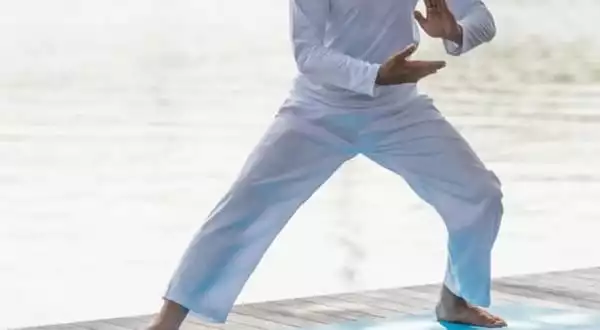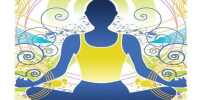A study found that stroke survivors had improved hand and arm function, sitting balance, mental health, and quality of life after three months of practicing a modified form of Tai Chi in which participants are seated, compared to stroke survivors who participated in a standard stroke rehabilitation exercise program. The study is the first to show that practicing a seated version of Tai Chi soon after a stroke improves health outcomes.
According to new research published today in Stroke, stroke survivors who practiced a seated form of Tai Chi had equal or greater improvement in hand and arm strength, shoulder range of motion, balance control, symptoms of depression, and activities of daily living after three months than those who participated in a standard stroke rehabilitation exercise program.
According to the American Heart Association/American Stroke Association’s Guidelines for the Early Management of Patients with Acute Ischemic Stroke, persons should begin stroke rehabilitation within seven days of having a stroke and continue for up to six months. Many survivors, however, refuse to participate in rehabilitation therapy because they lack physical stability or are unable to completely utilize their arms.
In a Scientific Statement on Physical Activity and Exercise Recommendations for Stroke Survivors, the Association also notes that flexibility and muscle strength training, such as yoga and Tai Chi, are reported to be beneficial for stroke survivors in improving balance, quality of life, and mental health, as well as reducing fear of falling.
My subsequent study will assess the long-term impacts of sitting Tai Chi. People will most likely need to stick with the sitting Tai Chi exercise for more than 12 weeks to get long-term benefits.
Jie Zhao
Tai Chi, a classic Chinese martial art, consists of a series of slow, meticulous movements of the hands, arms, neck, legs, and core mixed with deep breathing. The researchers created a sitting regimen of Tai Chi movements for those who had a recent ischemic stroke (blocked blood artery to the brain) and suffered hand and arm weakness or partial paralysis.
“Tai Chi has a long history as a form of exercise in China. We revised the Tai Chi movements for people who have weakness or partial limb paralysis. It is tailored so that participants can move one arm with the help of the healthy arm,” said Jie Zhao, Ph.D., lead study author and a lecturer at Yunnan University of Traditional Chinese Medicine in Yunnan, China.
The research was carried out at two traditional Chinese medicine hospitals in Kunming, China. Researchers enrolled 160 persons (average age 63 years; 81 men and 79 women) who had their first ischemic stroke within six months of enrolling in the research and kept used of at least one arm. Half of the study participants were randomly assigned to the seated Tai Chi program, while the other half were assigned to the control group, which conducted a normal stroke rehabilitation exercise program (hospital-recommended upper limb movements; the amount, implementation strategies, and caregiver responsibilities were similar to the Tai Chi group).

Participants in the seated Tai Chi group received individual instruction from a Tai Chi instructor for one week while hospitalized, as well as a self-guided DVD to practice at home three days a week for 11 weeks. For 12 weeks, the control group was given a self-guided workout video of typical routines to practice at home. Both study groups had their at-home exercises supervised by family members and caretakers. The 12-week program and 4-week follow-up were completed by 69 people in the sitting Tai Chi group and 65 persons in the control group.
Physical function and psychological state were measured for all study participants via questionnaires and assessment tools at the start of the study and at four additional times during the 16-week program, and the outcomes of the two groups were compared.
Researchers analyzed the questionnaires and assessment tools and found:
- When compared to the normal stroke rehabilitation group, individuals in the sitting Tai Chi group had better hand and arm function and sitting balance control.
- When compared to the control group, participants in the seated Tai Chi group experienced significant reductions in depressive symptoms, improved shoulder range of motion, and demonstrated significant improvements in activities of daily living and quality of life.
- After the 12-week intervention, more than half of the Tai Chi group continued to practice. These improvements continued over the Tai Chi group’s 4-week follow-up phase.
“Sitting Tai Chi can be practiced in a chair or wheelchair and is quite convenient because it can be done in the comfort of your own home. The program is essentially free to use and does not require any extra equipment or travel time” Zhao stated.
This is the first randomized controlled trial to look at a modified sitting Tai Chi routine and showed that it enhanced short-term outcomes in a group of people who might struggle to stick to a normal stroke rehabilitation exercise program. The findings show that this mind-body activity can help stroke survivors with hand and arm weakness or partial paralysis improve their balance, coordination, strength, and flexibility.
“My subsequent study will assess the long-term impacts of sitting Tai Chi,” Zhao explained. “People will most likely need to stick with the sitting Tai Chi exercise for more than 12 weeks to get long-term benefits.”
One of the study’s disadvantages is that it was only conducted at two locations. Furthermore, because the physicians and health care providers at the facilities are trained in traditional Chinese medicine and support the study, the findings may not be indicative of the rehabilitation accessible to stroke patients receiving care at other institutions.
Stroke is the fifth-highest cause of death in the United States, as well as a primary cause of long-term disability, according to the American Heart Association.














